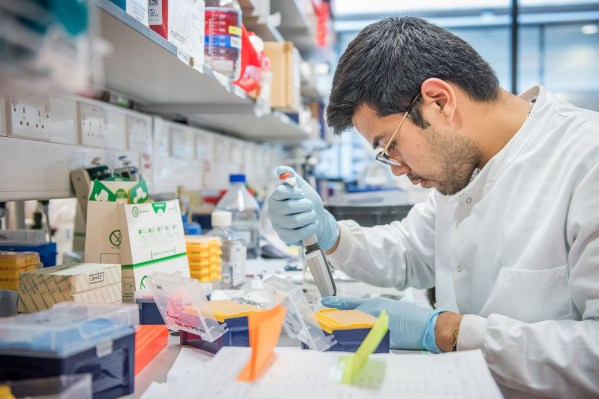Leaning on its in-house life sciences expertise GV has backed another biotech startup in the UK, co-leading a £20 million ($27.1M) Series A in Oxford University spinout Vaccitech, which is developing a universal flu vaccine.
Sequoia China, another new investor, is also co-leading the round, along with existing backer Oxford Sciences Innovation (OSI) — which operates a fund that invests in high tech spinouts from Oxford University (and counts GV as one of its backers). Neptune Ventures also participated in Vaccitech’s financing.
The company says the new funding will be used to expand its business, develop its lab structure, and push its influenza and prostate cancer programs through Phase II clinical trials by the end of 2019, as well as moving three other programs into the clinic.
It’s working on six products in all — based on inducing cellular immune responses using non-replicating viral vectors for treatment or prophylaxis against diseases at various stages.
As well as a universal influenza vaccine, Vaccitech has a prostate cancer therapeutic in development; a Middle East Respiratory Syndrome (MERS) prophylactic; a Human Papillomavirus (HPV) therapeutic; a Hepatitis B (HBV) therapeutic; and another infectious disease asset which it says is in late preclinical development.
It claims that the CD8+ T-cell responses induced by its proprietary platform are among the highest reported in any human trials.
In terms of time-to-market, CEO Tom Evans says its flu products are between five to six years out, while HPV and HBV are in the seven to nine year timeframe.
“All of these things take time. Basically all of our products are in the five to ten year timeframe,” he tells TechCrunch. “We’re much faster than most people because we’re in phase II — a lot of young companies are looking at at least ten years. So we’re three to four years ahead of those people.”
Discussing how those still relatively lengthy timescales can work for traditional tech investors, Evans says: “We will be able to see critical milestones at the end of 2019 — in other words we’ll have phase II data from our flu product, and we will have phase II data from our prostate cancer vaccines.
“And so at that point we will have major inflection points in terms of partnerships or other potential ways of growing the investment in Vaccitech and growing the organization — and potentially even seeing a return for our investors in terms of having some milestones to hit.”
“So if you think about it from that point the milestones are in the tech timeframe — which is in the two year timeframe… But that’s not when we would want to necessarily exit. That’s when we would be able to really increase our investment opportunity to grow the company,” he adds.
An Oxford University Innovation spokesman adds that it’s not seeing a major shift change in tech-focused VCs backing life sciences, although he notes: “We are beginning to see more corporate VCs come in earlier.”
“Spinouts tend to have a much longer development cycle than your average tech startup, so the investment strategies and timelines tech VCs go for don’t particularly marry up with what a spinout needs,” he continues, pointing out that that was the impetus for establishing OSI to help support high tech spinouts.
OSI has seen its output and investment levels leap up since launch in 2015 — when it did 10 spinouts; rising to 21 in 2016, according to the spokesman. The fund itself, which began with £300M, is now pegged at £600M.
